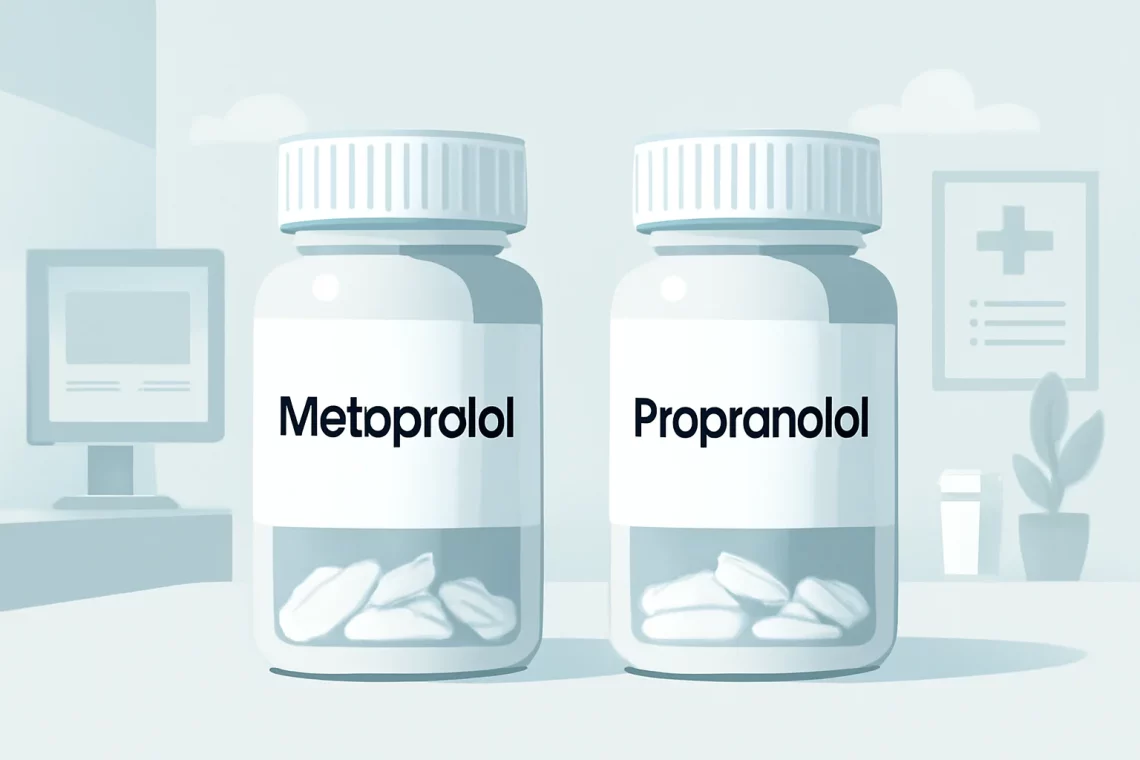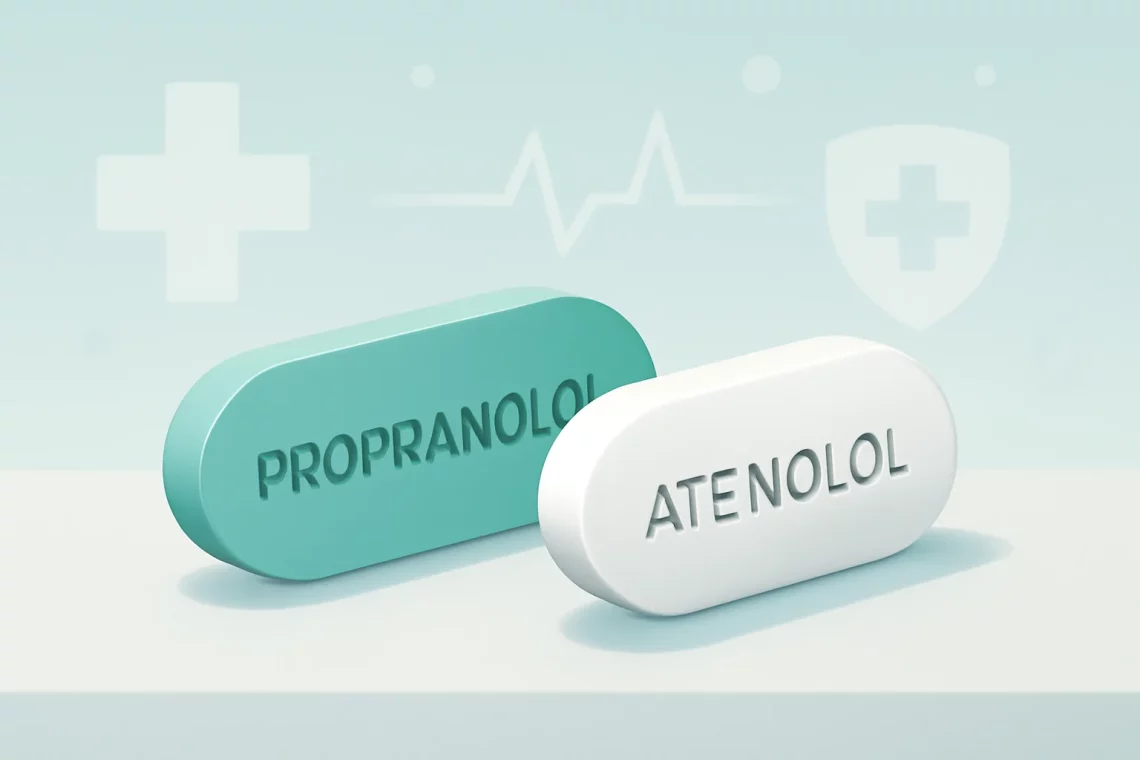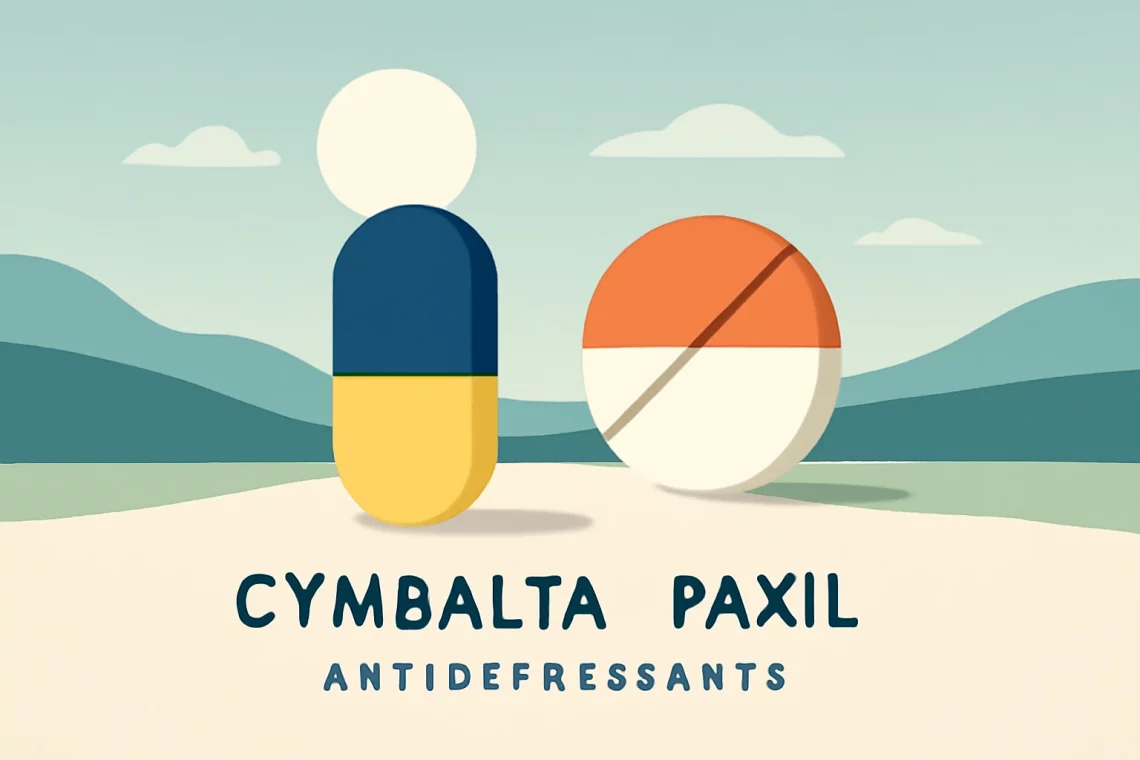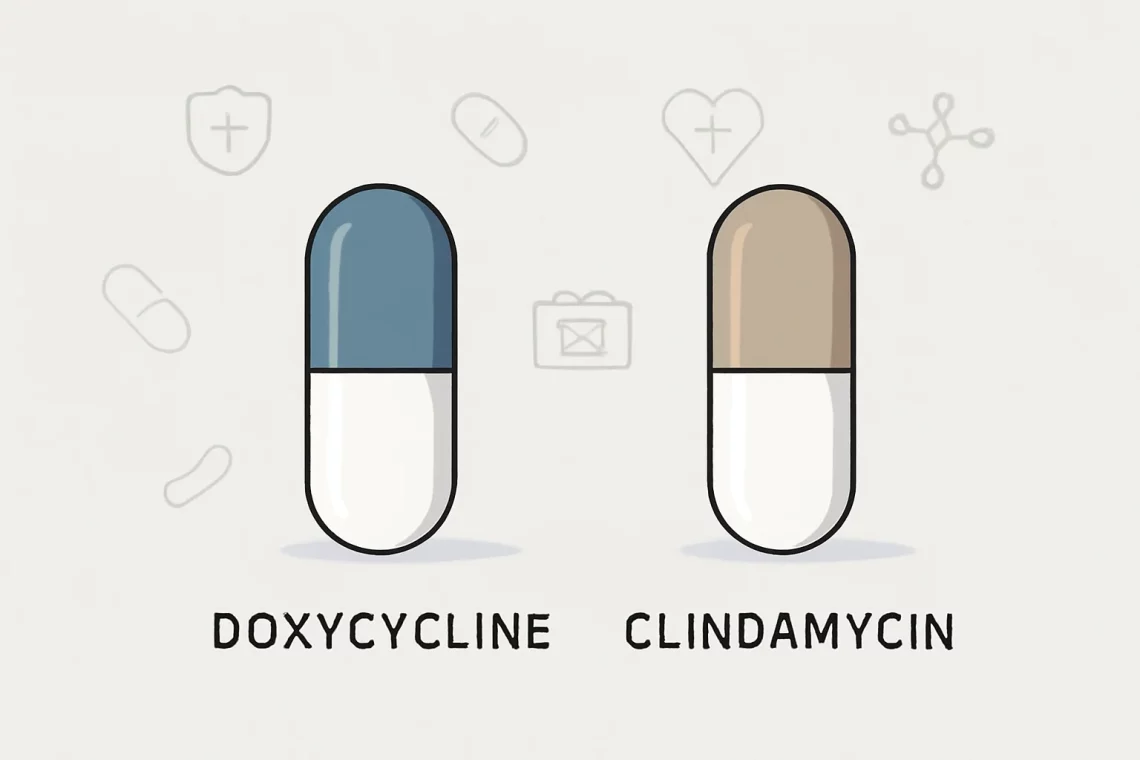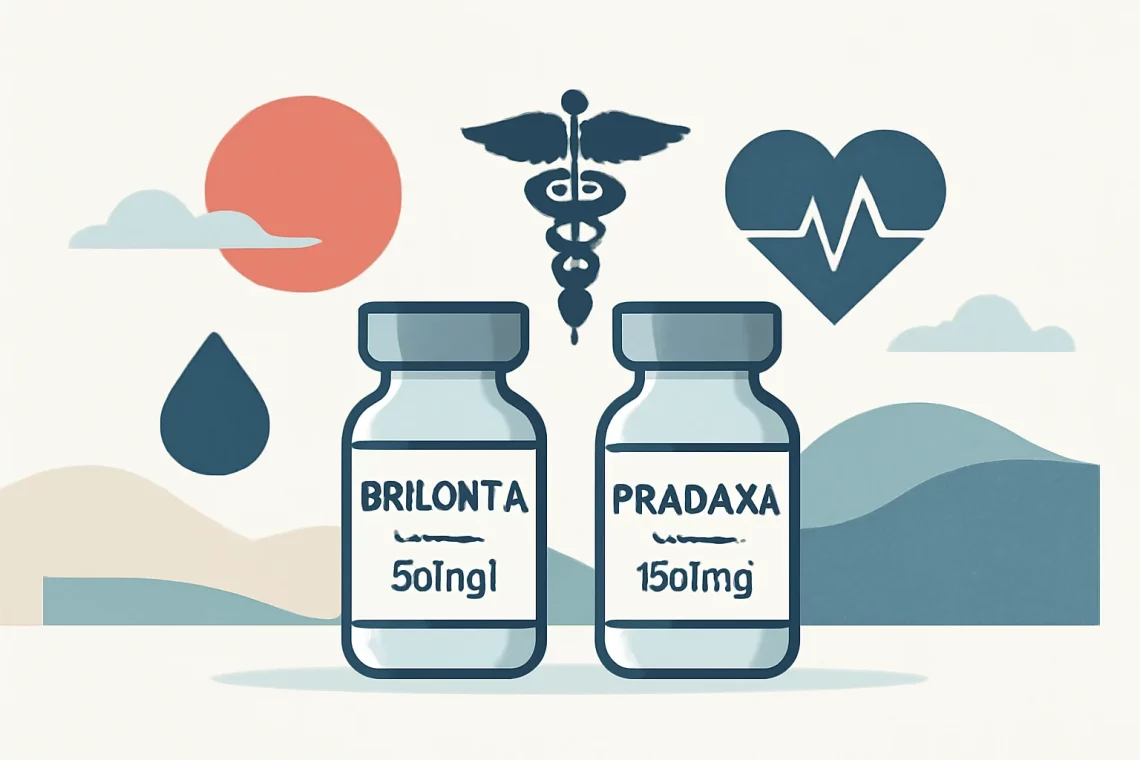-
Metoprolol vs Bisoprolol: Key Differences and Similarities Explained
Metoprolol and bisoprolol are two commonly prescribed medications that belong to the class of drugs known as beta-blockers. These medications are primarily used to manage cardiovascular conditions, including hypertension (high blood pressure), heart failure, and certain types of arrhythmias (irregular heartbeats). Beta-blockers work by blocking the effects of adrenaline on the heart, which helps to reduce heart rate and lower blood pressure. In recent years, there has been significant discussion among healthcare providers and patients regarding the differences and similarities between metoprolol and bisoprolol. Both medications have proven effective, but they do have distinct characteristics, mechanisms of action, and side effect profiles that may influence the choice of one over…
-
Wellbutrin vs Effexor XR: Which Antidepressant Is Right for You?
Depression and anxiety disorders are prevalent mental health issues that affect millions of individuals globally. As the understanding of these conditions evolves, so too does the approach to treatment. While therapy often plays a vital role in managing mental health, pharmacological interventions are commonly employed to help alleviate symptoms. Among the various medications available, Wellbutrin and Effexor XR are two options frequently prescribed by healthcare professionals. Each medication functions differently within the body and is designed to address distinct aspects of mental health disorders. Wellbutrin, generically known as bupropion, is primarily used to treat major depressive disorder and seasonal affective disorder. It is unique in its mechanism of action, as…
-
Metoprolol vs Propranolol: Key Differences and Uses Explained
Metoprolol and propranolol are two widely prescribed medications belonging to the class of drugs known as beta-blockers. These medications are primarily used to manage various cardiovascular conditions, such as hypertension, angina, and arrhythmias. However, their mechanisms of action, therapeutic applications, and side effect profiles differ significantly, making them suitable for different patient needs. Understanding these differences is crucial for both healthcare professionals and patients, as it can influence treatment efficacy and safety. Beta-blockers work by blocking the effects of adrenaline on beta-adrenergic receptors, leading to a decrease in heart rate and blood pressure. This class of drugs is beneficial not only for heart-related issues but also for other conditions such…
-
Propranolol vs Atenolol Which Beta Blocker is Right for You
Propranolol and atenolol are both medications belonging to a class known as beta-blockers. These drugs are commonly prescribed for various cardiovascular conditions, including hypertension, angina, and arrhythmias. Beyond their primary uses, beta-blockers have gained attention for their effectiveness in managing anxiety and migraine prophylaxis. As they work by blocking the effects of adrenaline on the beta-adrenergic receptors, they can significantly reduce heart rate and lower blood pressure, leading to improved overall cardiovascular health. Despite their similarities, propranolol and atenolol differ in their specific mechanisms of action, side effects, and therapeutic applications. Understanding these differences can help patients and healthcare providers make informed decisions about which medication is best suited for…
-
Cymbalta vs Paxil: Comparing Two Popular Antidepressants
The landscape of mental health treatment has evolved significantly over the years, with a variety of medications available to help individuals manage conditions such as depression and anxiety. Among these medications, Cymbalta and Paxil have gained considerable attention for their effectiveness in treating mood disorders. While both of these drugs belong to different classes of antidepressants, they are often compared due to their similar applications and potential side effects. Cymbalta, known generically as duloxetine, is a serotonin-norepinephrine reuptake inhibitor (SNRI) that is commonly prescribed for depression, generalized anxiety disorder, and chronic pain management. Paxil, or paroxetine, is a selective serotonin reuptake inhibitor (SSRI) that is primarily used to treat major…
-
Amoxicillin vs Cephalexin: Which Antibiotic is Right for You?
In the realm of modern medicine, antibiotics play a crucial role in combating bacterial infections. Among the numerous antibiotics available, Amoxicillin and Cephalexin are two commonly prescribed options. Both of these medications belong to different classes of antibiotics and have their unique mechanisms of action, effectiveness against various bacterial strains, and potential side effects. As the rise of antibiotic resistance continues to be a pressing global health issue, understanding the differences and similarities between these two antibiotics can help patients make informed decisions about their treatment options. Patients often find themselves navigating a confusing landscape of medical terminology and treatment protocols. As they seek relief from infections, they may encounter…
-
Xanax vs Vistaril: Understanding Their Uses and Differences
Anxiety and panic disorders have become increasingly common in today’s fast-paced world, leading many individuals to seek relief through medication. Among the various treatments available, Xanax and Vistaril are two medications frequently discussed in the context of anxiety management. Both have unique properties and mechanisms of action, making them suitable for different patient needs and circumstances. Xanax, a well-known benzodiazepine, is primarily prescribed for the treatment of anxiety disorders and panic attacks. It works by enhancing the effects of a neurotransmitter called gamma-aminobutyric acid (GABA), which helps to calm excessive brain activity. On the other hand, Vistaril, an antihistamine with anxiolytic properties, is often used not only for anxiety but…
-
Lisinopril vs Enalapril: Which Medication is Right for You?
High blood pressure, medically known as hypertension, is a prevalent condition that affects millions of individuals worldwide. Managing hypertension is crucial for reducing the risk of serious health issues such as heart disease, stroke, and kidney failure. Among the various treatment options available, two commonly prescribed medications are Lisinopril and Enalapril. Both belong to a class of drugs called angiotensin-converting enzyme (ACE) inhibitors, which work by relaxing blood vessels and lowering blood pressure. Understanding the differences and similarities between these two medications can help patients and healthcare providers make informed decisions about treatment options. While both Lisinopril and Enalapril serve the same primary purpose, they have unique characteristics, including varying…
-
Doxycycline vs Clindamycin: A Comprehensive Comparison of Antibiotics
Doxycycline and clindamycin are two widely used antibiotics that play crucial roles in the treatment of various bacterial infections. Each of these medications has unique mechanisms of action, indications, and side effects, making them suitable for different clinical scenarios. Understanding the distinctions between doxycycline and clindamycin can help patients and healthcare professionals make informed decisions regarding antibiotic therapy. As antibiotic resistance continues to pose a significant challenge in modern medicine, the appropriate selection of antibiotics is vital to ensure effective treatment while minimizing the risk of developing resistant strains of bacteria. With a comprehensive understanding of both medications, healthcare providers can tailor their prescriptions to the specific needs of their…
-
Brilinta vs Pradaxa: A Comprehensive Comparison of Anticoagulants
Brilinta and Pradaxa are two widely used medications that play crucial roles in managing different cardiovascular conditions. With the increasing prevalence of heart diseases, the need for effective treatments is more significant than ever. Both Brilinta (ticagrelor) and Pradaxa (dabigatran) offer unique mechanisms of action and indications, making them valuable options in clinical practice. Brilinta is primarily an antiplatelet agent, utilized to prevent blood clots in patients with acute coronary syndrome or those who have had a heart attack. Its ability to inhibit platelet aggregation helps reduce the risk of subsequent cardiovascular events. On the other hand, Pradaxa is an anticoagulant that works by directly inhibiting thrombin, a key enzyme…








